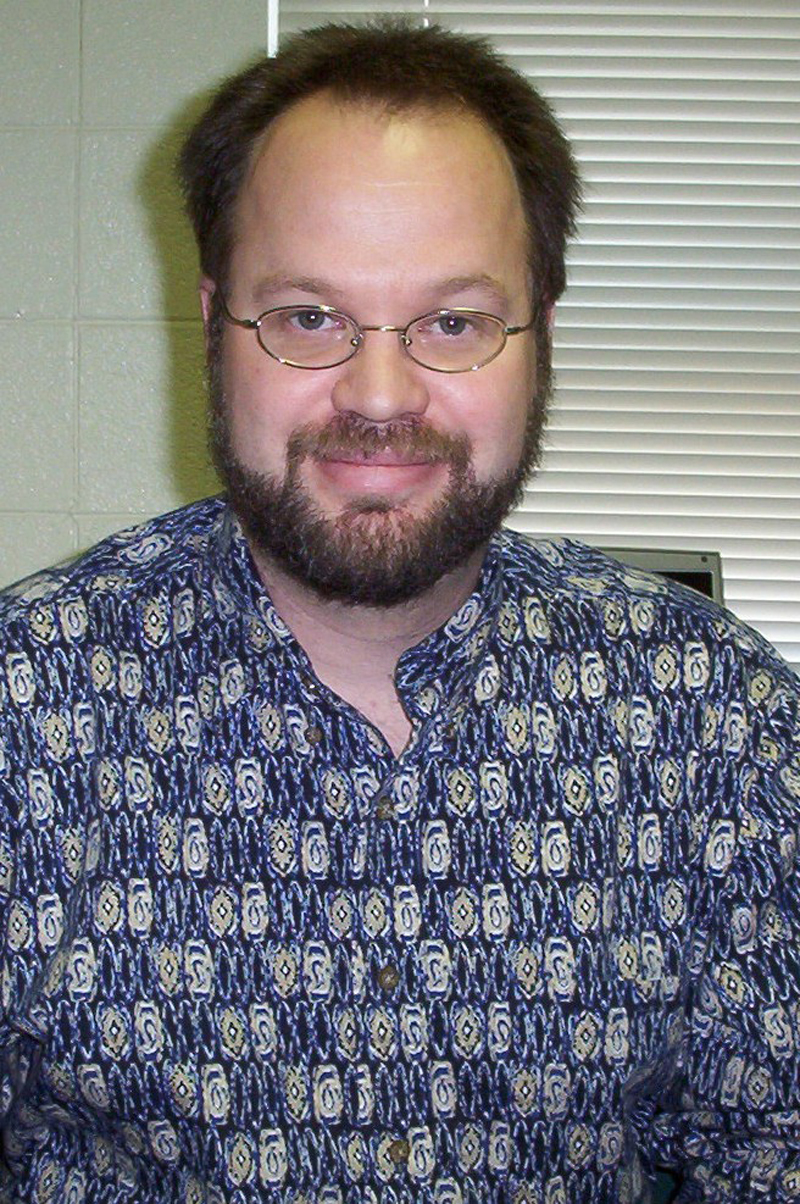Contact: Phil Hearn

Ed Luke
Research engineers at Mississippi State are providing unique, high-performance computer codes to help U.S. space officials design safer and more efficient rocket-propelled vehicles of the future.
A team from the university's Computational Simulation and Design Center is working closely with the National Aeronautics and Space Administration to accurately and effectively simulate combustion problems and high-speed atmospheric flight. The team is led by Ed Luke, an assistant professor of computer science and engineering.
Coordinating primarily with the Marshall Space Flight Center in Huntsville, Ala., and Stennis Space Center near Bay St. Louis, the MSU researchers are developing state-of-the-art computer codes, known as LOCI and CHEM. The software allows NASA to quickly evaluate and synthesize complex numerical modeling configurations, which are needed to simulate and automate rigorous testing procedures for spacecraft design.
"Several NASA engineers have been using software developed by our group to perform simulations in the evaluation and redesign of the space shuttle fuel tank in the wake of the space shuttle Columbia mishap," said Luke, who holds three engineering degrees from MSU, including a 1999 doctorate in computational engineering.
"NASA Marshall also has been using the codes in the simulation and design of several rocket system components," added the bearded, bespectacled 1988 Gulfport High School graduate. We currently are expanding our research effort to provide NASA with next-generation rocket-system simulation capabilities."
Research team member Pasquale Cinnella, professor and graduate coordinator for the aerospace engineering department, predicted the special computer codes may allow MSU to "lead the field in accuracy and reliability for physically complex problems.
"In order to go to the Moon and Mars, we will need more work focused on rockets and rocket engines," he added. "For Mars, we also need more research on how to negotiate its atmosphere at high speeds when entering. We are having good results."
NASA has provided grants totaling more than $1.1 million and the National Science Foundation has given another $300,000 to support the project. The grants are channeled through MSU's SimCenter, a unit of the ERC (Engineering Research Center), a nationally prominent high-performance computing facility within the Bagley College of Engineering.
"We rely on robust, accurate, high-fidelity analyses tools to develop new systems and to improve existing ones," said Robert Garcia, manager of the computational fluid dynamics branch at Marshall's Structural Dynamics Laboratory.
"LOCI/CHEM's current capabilities and robustness make it a key component in our suite of tools," he added. "The LOCI framework's potential for supporting tightly coupled multidisciplinary analyses is of high interest to us."
Other members of the MSU SimCenter team include Xiao-Ling Tong, an assistant research professor with expertise in modeling the flow of gases and other particles; and Lin Tang, a research associate whose specialty is in combustion modeling. Five MSU graduate students also assist in the project.
Luke created the two codes as part of his 1999 MSU doctoral dissertation and began cementing a close working relationship with NASA. The partnership became solidified even more following last year's Columbia space shuttle disaster. "They trusted that if there were any issues that came up (related to the MSU codes), we would be able to solve them," said Luke.
Luke said the LOCI (Logic Programming for Parallel Computational Field Simulations) system, or framework, automates the integration of all of the specialized functions and processes associated with numerical modeling in today's highly complex, supercomputing environment.
"LOCI provides a more rigorous way of assembling things, a more formal way that detects when things don't make sense and warns developers of multiple models that the way they're hooking them together is not logically sound," he explained.
Luke said CHEM (Computational Combustion Modeling) is the first application developed using the LOCI software. "It's actually a demonstrator of the LOCI technology," he said. "It features the first simulation capability that has been built using this unique synthesis approach to building this kind of software."